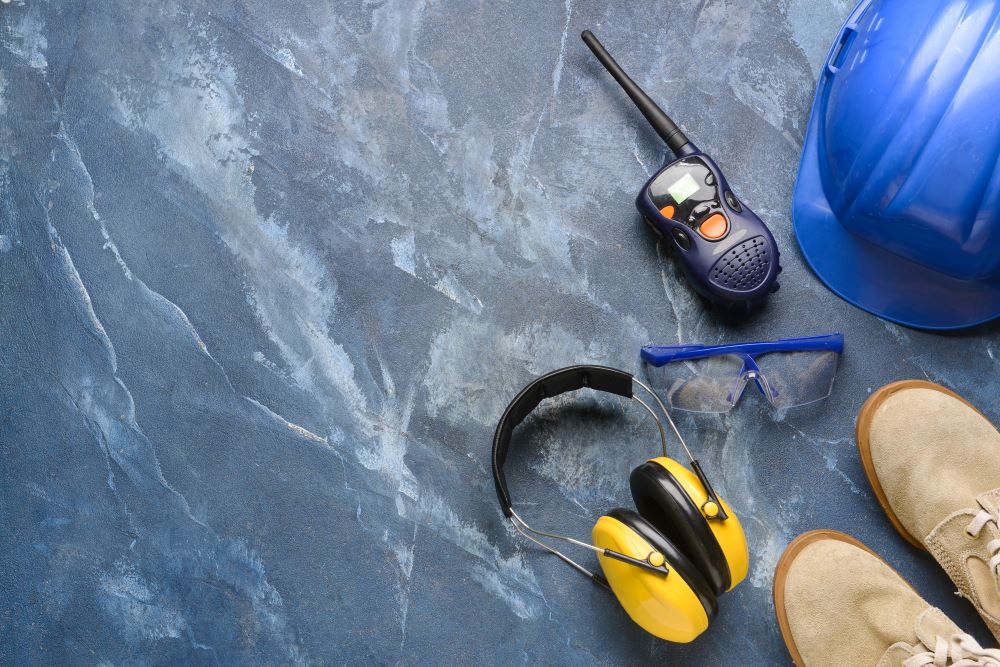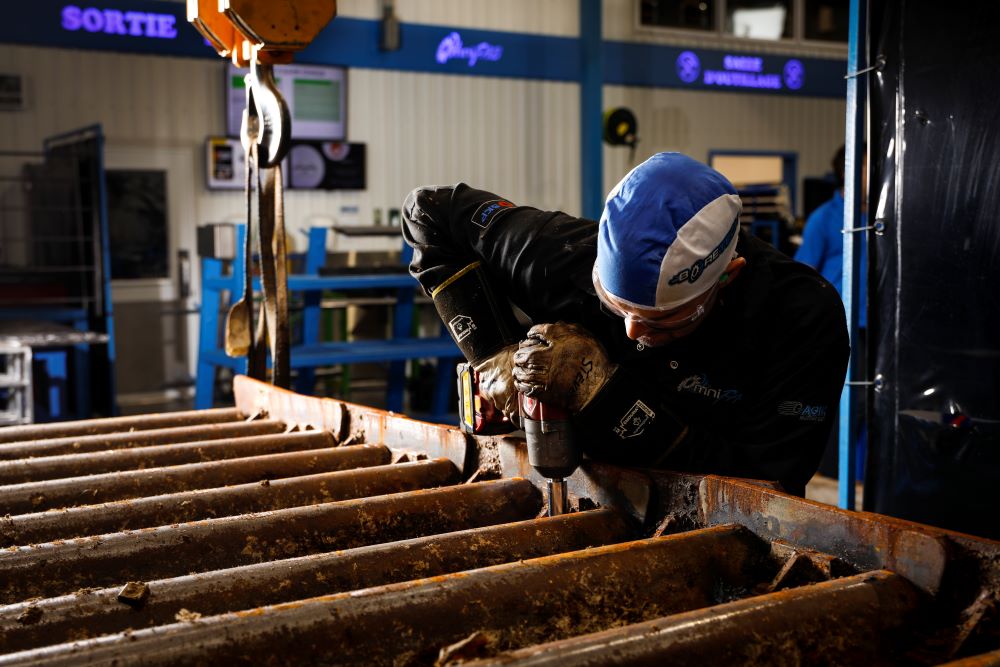Many industrial buildings have impressive dimensions, especially when it comes to height.
This means that if maintenance or servicing work needs to be carried out inside or outside these industrial buildings, workers could be exposed to the risk of falling from heights high enough to cause significant injury.
To prevent such incidents when working at height, industrial guardrails have repeatedly proven their effectiveness.
In this text, Omnifab’s specialists in securing infrastructures at height share with you several facts you need to know about industrial guardrails.
What is an industrial guardrail?
According to the definition provided by the CNESST, a guardrail is a form of collective protection designed to prevent falls.
Designing a compliant guardrail
Generally speaking, to be considered compliant, a guardrail must consist of :
- a top rail laid flat, located between 1 m and 1.2 m above the area where the worker is standing;
- an intermediate rail at mid-height;
- a toeboard installed at floor level to retain objects and tools.
Where should industrial railings be installed?
These are installed at the edge of the void, on the sides of a floor, roof, platform, elevating platform, scaffolding, walkway, staircase or ramp.
Also according to the CNESST, a guardrail should be securely fastened at all points where a worker is at risk of falling, such as :
- into a liquid or hazardous substance;
- from a height of 1.2 m or more when using a wheelbarrow or vehicle;
- from a height of over 3 m in all other cases.
Also, the guardrail must be able to withstand a horizontal force of 900 N and a vertical force of 450 N applied at any point on the top rail.
However, a guardrail may be temporarily removed during work if it interferes with the execution of the work. In this case, workers are required to wear a safety harness connected to an anchoring system by a fall arrest connection.
Equip your building with 100% compliant guardrails
Who is responsible for installing guardrails to secure work at height?
The person responsible for implementing fall protection measures is not always the same. Their identity will vary according to the nature of the work involved.
Working at height under the responsibility of an employer
When work is carried out at height by a contractor, it is the latter’s responsibility to provide adequate and compliant fall protection for his employees, free of charge.
This fall protection may take the form of a guardrail or personal protective equipment (e.g. safety harness).
Work at height carried out by subcontractors
When maintenance, servicing or repair work is carried out on an industrial building by subcontractors (electricians, industrial mechanics or other outside contractors), it is the building owner’s responsibility to deploy adequate fall protection.
Possible fines for non-compliance
If a worker carries out work less than 2 metres from the edge of the roof of a building over 3 metres high without the required fall protection, the person responsible could face a fine ranging from around $15,000 to several hundred thousand dollars.
Fall risk analysis
A fall risk analysis should first be carried out on the building to be targeted by work at height, in order to determine the most suitable fall-protection solutions.
This analysis includes a number of elements, such as :
- Measuring the time and frequency of exposure to the risk of falling;
- Defining access points to work at height;
- Defining areas at risk of falling.
Industrial railings or lifelines?
According to the CNESST, whenever possible, collective fall protection solutions should be given priority over personal protective equipment.
In other words, the installation of a guardrail or railing, which are considered collective fall protection measures, should be preferred to the use of a lifeline, which is an individual protection measure.
Omnifab fall arrest systems and industrial guardrails ensure your compliance
In conclusion, the risk of falling is inseparable from working at height. Fortunately, there are effective ways of reducing the probability of incidents, such as installing guardrails at strategic points in industrial buildings.
However, it’s also important to remember that the installation of guardrails is governed by various standards designed to ensure their effectiveness in preventing falls that can cause injury.
If you’re thinking of equipping your industrial building with permanent guardrails, you should entrust the job to a company that is not only able to design, manufacture and install custom metal railings, but that also specializes in risk analysis.
In this sense, a company like ours ensures the safety of your workers, as well as your compliance with the various applicable regulations. Contact us today to find out more about our turnkey guardrail design, manufacturing and installation service.


